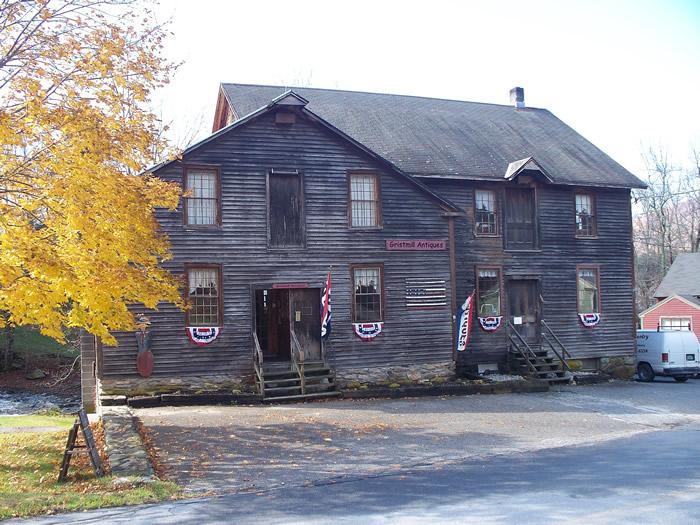
East Arlington Grist Mill / Candle Mill / Baker Mill / Browns Mill
Bennington Co. | Vermont | USA
Watersource: Peter's Branch of Roaring Brook.
East Arlington Grist Mill / Candle Mill / Baker Mill / Browns Mill
Going south on US 7, exit west onto Sr 313. Take an immediate right onto S Road, then a left onto Kansas Road. Kansas Road becomes Old Mill Road and the mill is on the left before reaching Ice Pond Road. The address for the mill is 316 Old Mill Road, East Arlington, Vermont.
View Larger Map

Shortly after the town of Arlington was formed, c. 1761, at a Proprietor's meeting in 1764, of which a man named Remember Baker was a member, a vote was taken to give 50 acres of land to any man who would set up a grist mill in what is now called East Arlington.
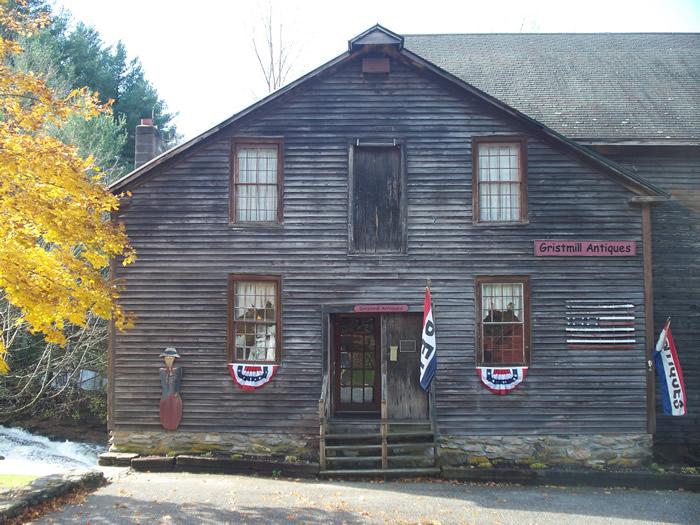
This offer was accepted in 1766 by Remember Baker, a Green Mountain Boy first cousin to Ethan Allen, who built the mill and a saw mill on this site.
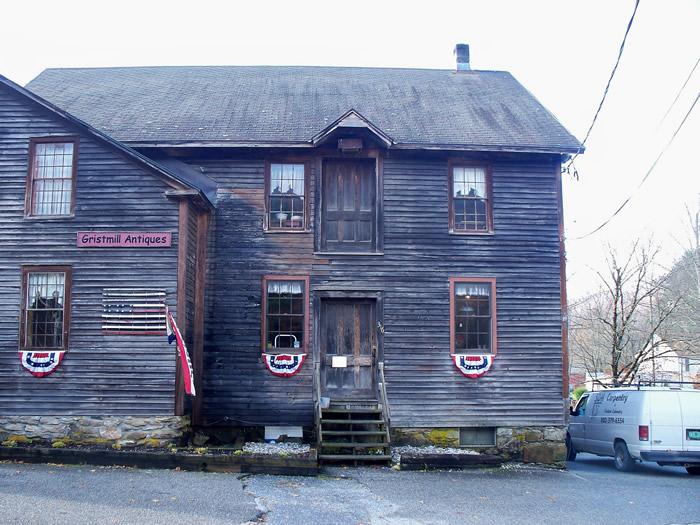
The mill was built on Peter's Branch of Roaring Brook at the falls.GPS: 43D 3.58'N, 73D 8.38'W ele. 787'/240 meters Arlington Quadrangle
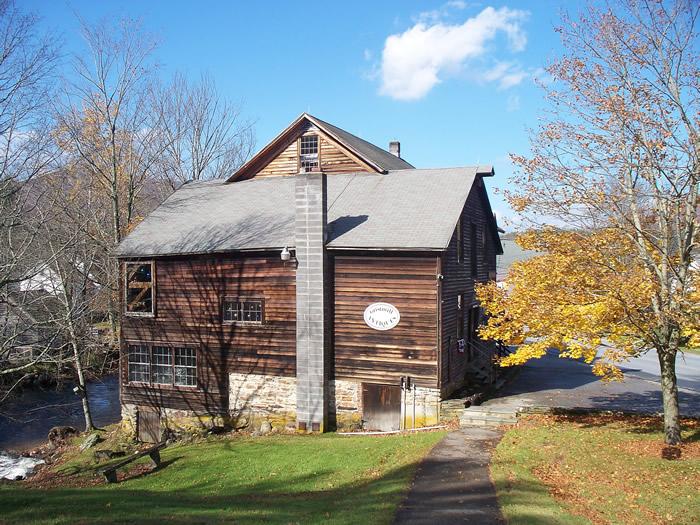
In 1789, a mill on this site, owned by Ozi Baker, probably a son of Remember Baker, burned. The lower portion of the mill was the mill rebuilt in1789, The larger "L" portion was added in the 1860's.

View from inside the window seen on the photo above.
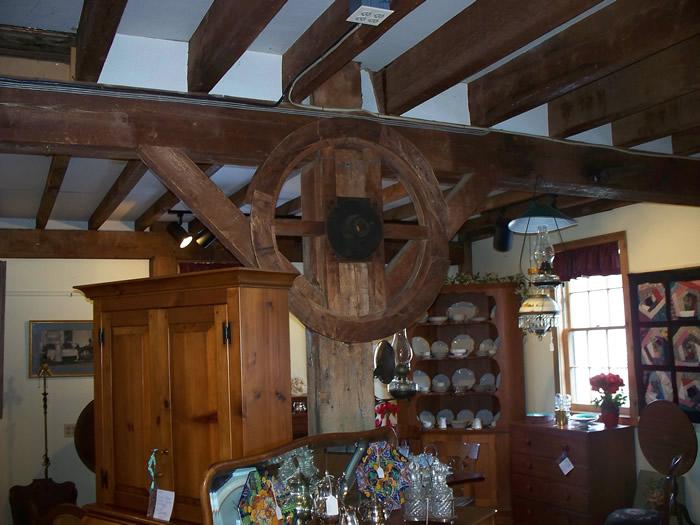
Some of the interior of the mill in the present day. It is known as the Gristmill Antiques Center of East Arlington.
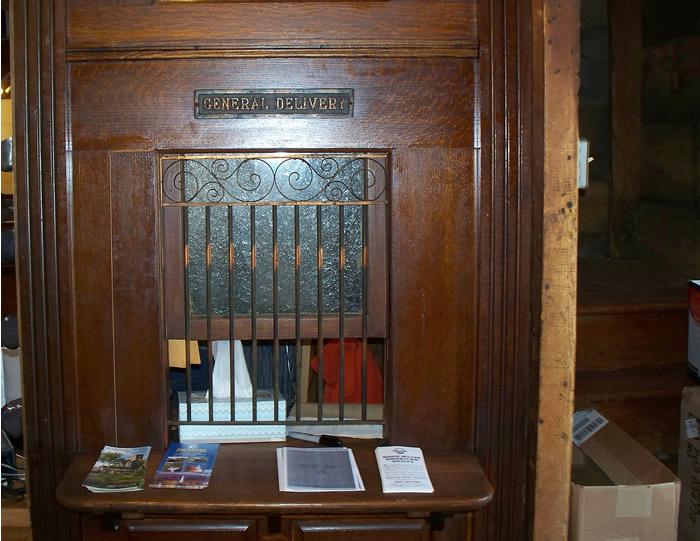
Some early post office equipment in the antique shop. It might be that this was used in the mill, as many old mills also served as post offices at one time or another in their histories.
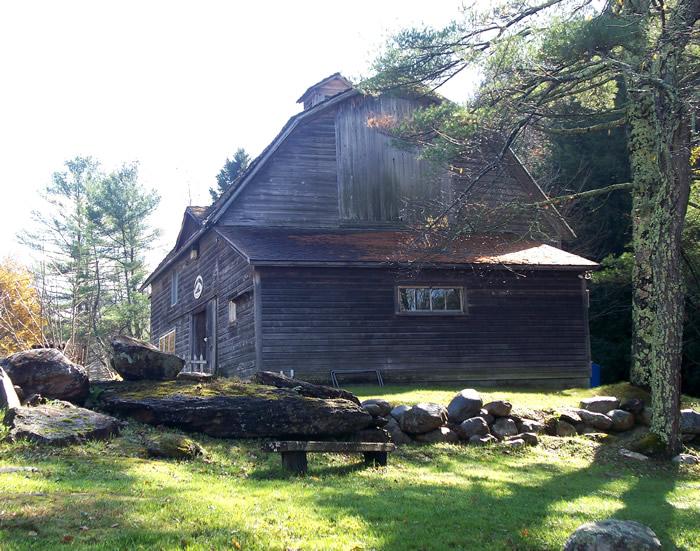
An old barn just upstream of the mill. The dam was originally behind this location, which was then a sawmill.
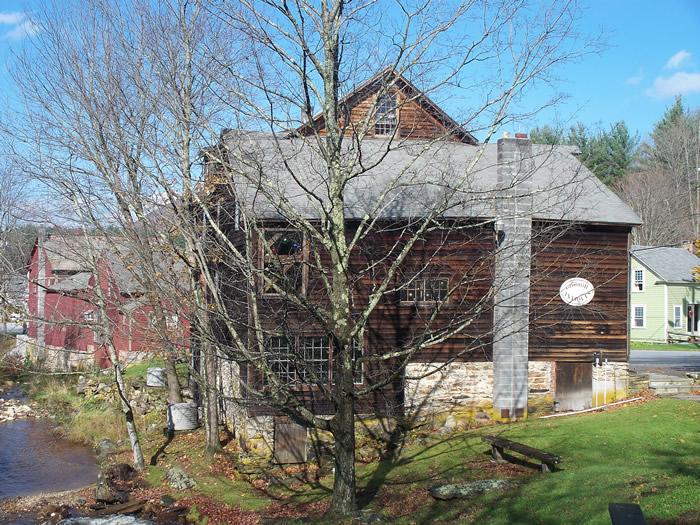
The log-crib dam, situated from where this photo was taken, washed out in the "Flood of 1927". A cribbed flume and then barrel-staved penstock supplied the wheel, mounted to the stone mill-wall, probably on the rear, upstream corner.
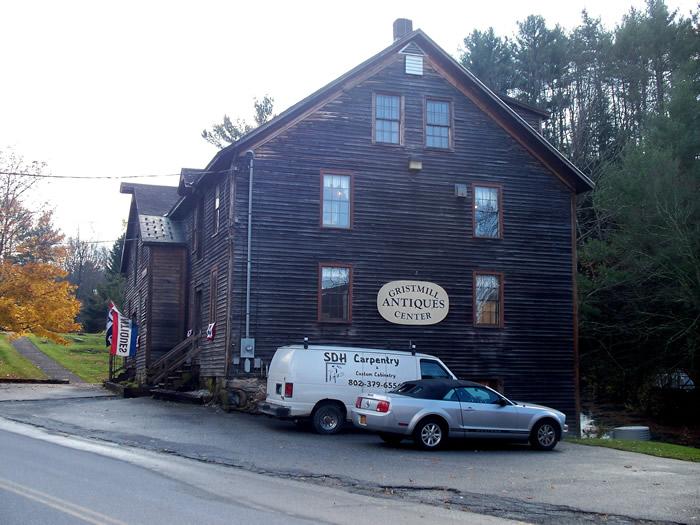
A new mill (possibly the present mill) was built by Meerworth & Brown in 1869. Later the mill owner was shown to be A. R. Brown. The mill operated until the 1920's, with Horace Lawrence being the last miller.